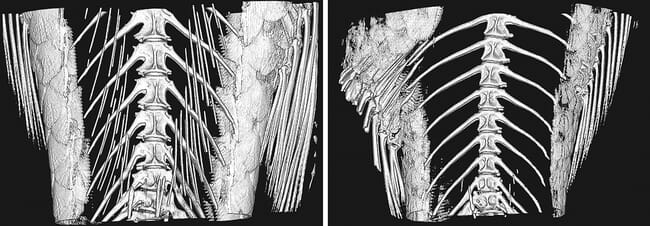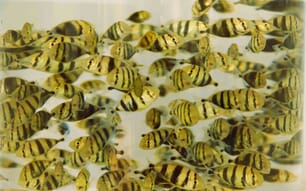
Removing the intermuscular bones from crucian carp makes the fish easier to process and eat.
The fish was created with gene editing and according to the institute and reporting from China Daily, resolves a 50-year debate on whether intermuscular bones can be reproduced. The researchers focused on crucian carp – a bony freshwater fish that is farmed across Eastern Europe and Asia. Though the species is a popular aquaculture offering, its tiny intermuscular bones make it difficult to eat and process at a large scale. According to analysis in China Daily, leveraging gene editing to remove the intermuscular bones could make the fish more competitive and yield more commercial opportunities.
The research team at the Heilongjiang Fishery Research Institute embarked on the project in 2009 and identified the key gene that regulates the growth of the carp’s intermuscular spine – bmp6. The biologists were able to successfully knock out the gene without seeing negative impacts on the fish’s reproduction and growth levels.
"In 2020, we successfully cultivated the first generation of crucian carp without intermuscular bones with a success rate of 12.96 percent. The second generation in 2021 had a success rate of 19 percent," said Kuang Youyi, a researcher on the team. "At the beginning of 2022, we released around 20,000 fish of the third generation in our test base in Harbin, capital of Heilongjiang province, and began large-scale breeding.
"The fish grew well and were superficially indistinguishable from normal crucian carp," he said.
"Results of an examination conducted in August showed that the success rate had reached 100 percent."
Though the breakthrough is welcome progress, the team stresses that the science still has to undergo safety regulation and mass production. Despite having a long way to go before being widely adopted, they remain excited.
"People will no longer have to pick out tiny fish bones," said Li Shaowu, head of the team. "This can greatly change the global fish diet culture and habits and have a profound impact on boosting consumption of aquatic products in the future.
"The genetic improvement of crucian carp without intermuscular bones is a bold innovation in the breeding industry with Chinese characteristics," said Li. "It is an effective way to solve the problem of having a large quantity but a low efficiency in crucian carp production, which will rapidly improve the core competitiveness of our breeding industry and lead the reform of Chinese aquaculture."
The team stressed that they adhered to biosecurity protocols and ensured that the gene-edited fish did not interact with wild stocks of carp.
"Since the year's beginning, we have been carrying out ecological security assessments, including on their abilities in swimming, frost-resistance and breeding, and the risk of being preyed upon," said Kuang.
"We are conducting the development on a sterile variety, which can help eliminate possible impacts caused by gene-edited fish in the wild."
The team expects to finish the project in 2025.




